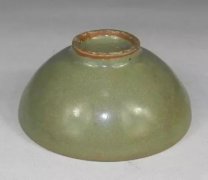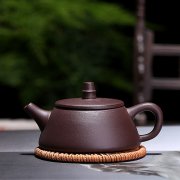Is tieguanyin oolong tea? Tieguanyin tea name origin story and correct brewing method
Today, Tieguanyin Oolong Tea, also known as Tieguanyin or Tieguanyin, is one of the top ten famous teas in China. It is common in Taiwan and Chinese mainland, although the processing methods are slightly different. Of course, when you walk into teahouses in these countries, you will see Tieguanyin on the menu. Even Western cafes often list the Iron Goddess as their oolong tea choice. Production styles vary greatly. In Taiwan, Tieguanyin is famous for its dark, heavily baked taste, while in Anxi, China, Tieguanyin's oolong tea producers tend to insist on a slight, floral baking flavor.

Anxi Tieguanyin Tea oolong tea produces green tea. Anxi Tieguanyin Tea picks late and in the afternoon (most tea varieties are picked in the morning). After a period of time, the full tea leaves mature, the buds open slightly, and the fragrance is stronger. Wither. The leaves then withered outdoors for 30 minutes and then indoors for another 7 hours. During withering, the leaves roll four times for 90 minutes each time. Tieguanyin's unique shaking process decomposes the cells and oxidizes the edges, making the tea more delicious. You can tell the quality of Tieguanyin from its leaves. The edges of the leaves are red. Oolong tea is made in a large metal pot on a firewood stove. Knead and roll. Roll the tea three times for 30 minutes each time. Rolling is the key link of Tieguanyin production. This process allows the oil to rise to the surface of the leaves. Bake. The tea is rolled up and baked, and the baking time varies from farmer to farmer, which forms the unique character of Tieguanyin. Baking is top secret and is cherished by farmers, their families and a small number of successors. Anxi is the birthplace of Tieguanyin. There, the tea industry has existed for more than 1000 years. Tieguanyin Tea Legend some legends about this name-the Goddess of Iron Mercy. However, to many people, this is obvious. Tieguanyin has a rich flavor, the leaves are large and juicy, it can brew more than ten times the kung fu style, and the patience of tea will not die. Guanyin Bodhisattva is a famous Bodhisattva in Buddhist circles. There is a legend that many centuries ago, there was a poor farmer who took care of a rather dilapidated Guanyin temple. One day, the Bodhisattva came to his dream. There, she told him to wake up and look at a cave and he would find a treasure worth sharing. So he found a small tea tree, planted it and took good care of it. The tea tree grows big and tall, producing a particularly delicious tea. He called the tea Tieguanyin and shared it with his community, continuing to lead a rich life, taking care of temples and goddesses living there every day. True or false, many people still believe that some of these earliest ancient tea trees grow in Anxi area. Anxi Tieguanyin Tea and traditional Taiwan Tieguanyin Anxi Tieguanyin Tea are more like green tea than oolong tea. Indeed, it is light oolong tea. Tea is only slightly oxidized. Therefore, the tea keeps its fresh and pleasant floral fragrance. On the other hand, Taiwan's Tieguanyin is traditionally heavily baked. The tea is dark in color, producing a strong baked and sweet taste. Tieguanyin is one of the best-selling teas in Taiwan. According to a recent survey, Tieguanyin is the most popular tea in China.
Important Notice :
前街咖啡 FrontStreet Coffee has moved to new addredd:
FrontStreet Coffee Address: 315,Donghua East Road,GuangZhou
Tel:020 38364473
- Prev

How much is the price of tea sets in Ru kiln? what are the characteristics of tea sets in Ru kiln?
The story of the Chinese teapot begins at the same time as the story of Chinese porcelain. In the Song Dynasty, Henan was the cultural and economic center of the Song Dynasty, and it attached great importance to the improvement of art during this period. Therefore, in the Song Dynasty, many pottery kilns were built and the ceramic technology was perfected. The history of Ru kiln porcelain Ru kiln is one of the types of pottery that appeared at that time.
- Next

Where does Yixing purple clay pot come from? Yixing purple teapot how to open the pot to raise the method steps tutorial
Learning the complex art of kungfu, we begin to understand its subtleties. First of all, we know that tea is alive. Only when tea leaves are properly treated and brewed the way they should be, can we brew perfect, sweet, aromatic tea. Then we learn about tea sets. We know how to take care of tea sets-be careful and never use dishwashing soap. Dry gently after each use.
Related
- Being chased out of the rain in front of Starbucks?! Store: Sheltering from rain under umbrellas poses a safety hazard
- The white moonlight has changed?! Lucky launches "Big Winter Pear American"
- Hand-brewed coffee three-stage method, high-sweet and universal brewing method to share! What does the high sweet water level of hand-brewed coffee mean?
- What is the difference between raw, refined and full espresso coffee? How to extract espresso and taste good?
- A complete list of coffee bean names and their meanings! What is Yejia Shefi coffee? Where is Mantelin coffee?
- What grade does Arida Manor Kaduai coffee beans belong to? What treatment is Arida ASD slow anaerobic sun exposure?
- The milk tea cup becomes smaller?! Overlord Tea Girl launches a new "Return to Yunnan" series
- Accused of selling counterfeit and high-priced coffee beans! Well-known boutique coffee brand "Oukelao" bowed and apologized!
- How to make espresso dumplings? Can I eat coffee and glutinous rice balls together?
- Save the unformed and stagnant powder cakes in one second! What is the problem with stagnant water in the powder bowl of the espresso machine?

